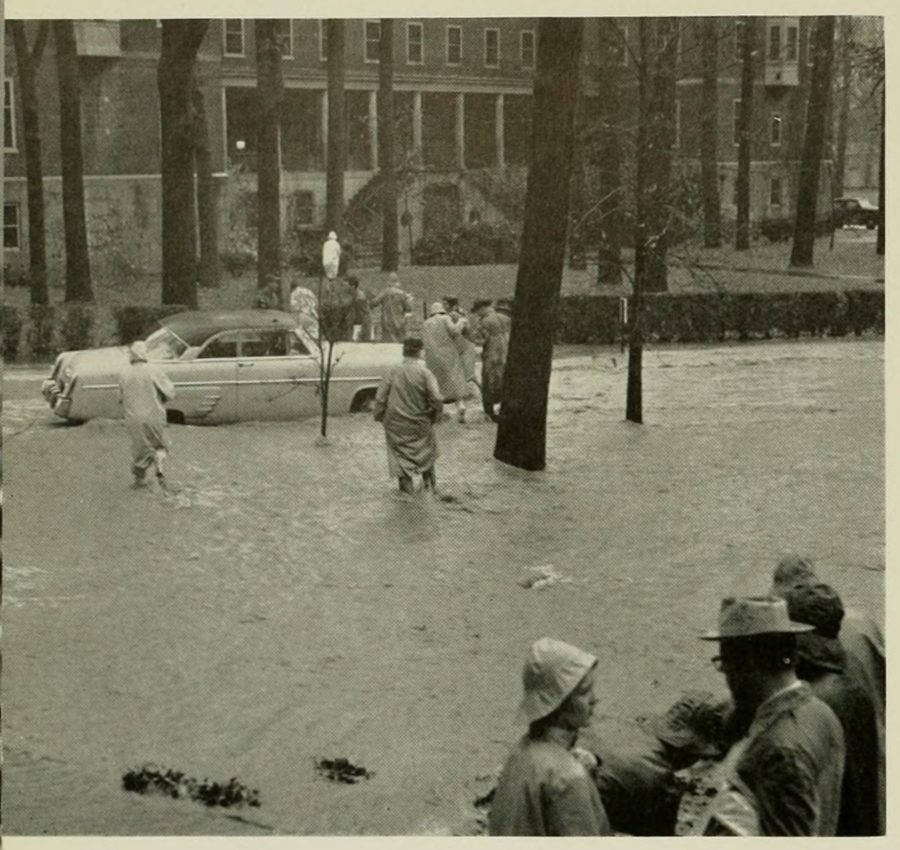The Aftermath of Hurricane Ida
September 8, 2021
From Aug. 26, 2021, until Sept. 4, 2021, Hurricane Ida made its way from New Orleans to New York, incurring damages reaching up to a possible $95 billion, which would place it at the 7th most economically damaging hurricane since 2000. The storm, which started in the Gulf of Mexico, had a rare massive impact far North. It was a category four storm with sustained winds of 150mph, only seven miles away from being a category five storm. The storm left one million Americans without power.
In Louisiana, the flood defenses put in place after Hurricane Katrina in 2005 proved to work effectively. However, the state remains in “life saving” mode, hoping to get electricity back in the next few weeks.
The northeast was also hit hard by the hurricane, with more than three inches of rain falling in New York per hour. New Yorkers were caught in the thick of the storm with several deaths and floods. This storm was not the first warning the city had. Even more powerful tropical cyclones, such as Hurricane Sandy in 2012, have shown repeated warnings signs about the city’s safety and infrastructure.
The effects of Hurricane Ida were visible at The University. The town of Lewisburg, located on the Susquehanna River, has a history of significant flooding. The Susquehanna is the nation’s longest non-navigable river. It is comprehensive and shallow, but despite this, when storms hit the area, the river can do a lot of damage. According to the Union County Historical Society, major floods have been recorded at least nine times in the last 125 years.
Associate Professor of Geology, Rob Jacob, discussed the damages of past hurricanes in Lewisburg and how the hurricane season has changed. “When you look at it through the eyes of someone here in Lewisburg, you wouldn’t notice that Hurricane Ida was different from a hurricane ten years ago. Some of the worst flooding we have had in this area was from the 70s from Hurricane Agnes,” Jacob said.
“A way you might observe change in hurricanes through time leading up to Ida would be looking at just the number of category four and higher storms that are hitting land, which are a lot. This season we have had a couple already just on the Eastern side of the U.S,” Jacob continued.
With the increased amount and severity of hurricanes over recent years, many connect this change with the unraveling effects of climate change. As water temperatures rise, more heat energy is available, and a higher potential for tropical cyclones to form. Studies have shown that there has been a substantial increase in the severity of hurricanes over the past few decades. Despite this information, it is essential to think about all of the factors of climate change that affect weather patterns today and not focus on one storm as a result of climate change.
“I know there is a lot of dialogue right now in the wake of Ida that it is an example of climate change, but it is really hard to look at one storm and say ‘oh this is climate change.’ We have to look at climate as a longer record from a larger lens. Yes, Ida was significant, but it’s a lot of other aspects that you have to investigate and understand,” Jacob said.
President Joe Biden took a trip through New York and New Jersey areas that were affected by the storm, declaring the climate crisis a “code-red” for the world.
Jacob also reflected on his time at the University and the floods he has seen, saying, “Back in 2011 we had enough of a flood to shut down school for a day. When I was a student in 1996 we had a flood in the Winter where all the people who left their cars in the Harris lot over break came back to having flooded cars.”
Lewisburg is no stranger to floods, but as the effects of climate change continue to unfold, the importance of action persists. Members of the University community can read more about past floods on campus and in Lewisburg on a billboard feature in The O’Leary Psychology & Geology Center.






















